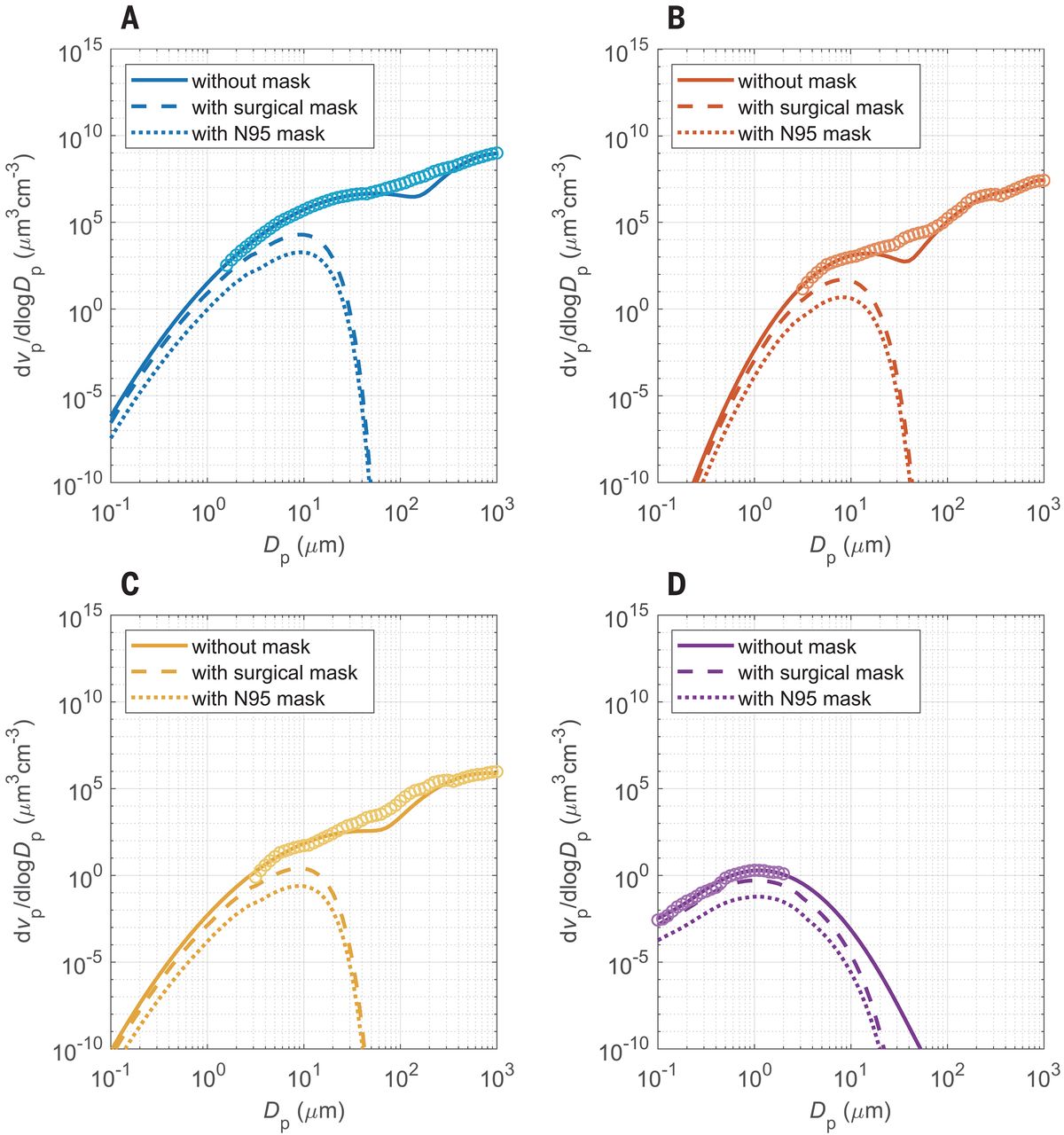卓克的总结是:1在病毒浓度较高的环境里,通过普通外科口罩被吸入的病毒就足以导致感染;在病毒浓度较低的环境里,戴口罩的人就安全很多。2在防止病毒传染给其他人方面,N95口罩和外科口罩不相上下,而想防止被感染,最好还是佩戴N95口罩。3要想从科上严谨地证实一个观念的是非常困难的,既要有数学模型、实测结果,还要与现实高度吻合。
Masking out air sharing
The effectiveness of masks in preventing the transmission of severe acute respiratory syndrome coronavirus 2 has been debated since the beginning of the COVID-19 pandemic. One important question is whether masks are effective despite the forceful expulsion of respiratory matter during coughing and sneezing. Cheng et al. convincingly show that most people live in conditions in which the airborne virus load is low. The probability of infection changes nonlinearly with the amount of respiratory matter to which a person is exposed. If most people in the wider community wear even simple surgical masks, then the probability of an encounter with a virus particle is even further limited. In indoor settings, it is impossible to avoid breathing in air that someone else has exhaled, and in hospital situations where the virus concentration is the highest, even the best-performing masks used without other protective gear such as hazmat suits will not provide adequate protection.
Science, abg6296, this issue p. 1439
Abstract
Airborne transmission by droplets and aerosols is important for the spread of viruses. Face masks are a well-established preventive measure, but their effectiveness for mitigating severe acute respiratory syndrome coronavirus 2 (SARS-CoV-2) transmission is still under debate. We show that variations in mask efficacy can be explained by different regimes of virus abundance and are related to population-average infection probability and reproduction number. For SARS-CoV-2, the viral load of infectious individuals can vary by orders of magnitude. We find that most environments and contacts are under conditions of low virus abundance (virus-limited), where surgical masks are effective at preventing virus spread. More-advanced masks and other protective equipment are required in potentially virus-rich indoor environments, including medical centers and hospitals. Masks are particularly effective in combination with other preventive measures like ventilation and distancing.


